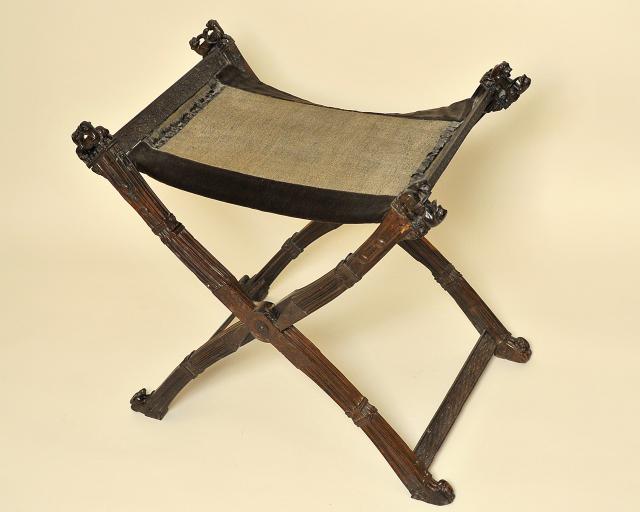Faldstool
Isola San Lorenzo

ebonyearly
13th century
In common with other period furnishings of its type, this piece is rather rare. Its presence in the collection is surely connected to papal visits to the city with attendant followers. Five papal conclaves were held in Perugia between 1216 and 1305 and this faldstool constitutes solid evidence of visits by religious dignitaries.
The artifacts’s shape is derived from that of the curule seat used by generals and magistrates of ancient Rome: it is a portable folding seat with no back or armrests. The name comes from a medieval German term which was Latinised and means a “folding seat” of the type reserved for episcopal use.
The Perugian faldistoro is covered in ornate carved decorations: the four pommels each bear a pair of reclining lionesses, the feet have small decorative animals and the scissor-shaped, hinged sides are covered in rhomboid and lozenge-shaped carvings. The use of an insect-resistant precious wood from outside Europe is a sure sign that this valuable piece would only have been used by a religious dignitary representing papal authority.